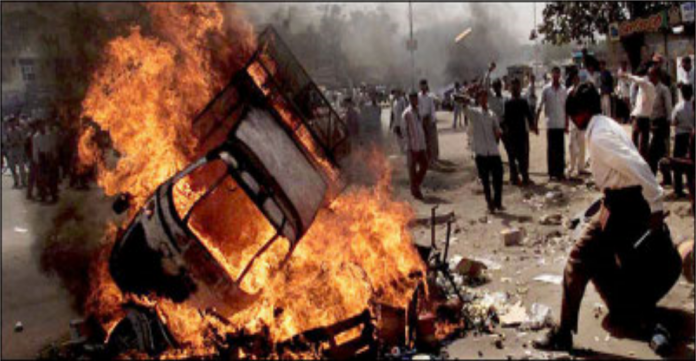By TwoCircles.net Staff Reporter
The Internal Displacement Monitoring Center (IDMC) and Norwegian Refugee Council (NRC) has published a report which claims that last year India saw displacement of 4.48 lakh people, just because of conflicts and violence. The report also says that there are 7.96 internally displaced persons (IDPs) in India.
The report says, “India’s significant economic growth and recent attempts to improve its social protection system have failed to resolve the persistent problem of inequality between social groups and between people living in urban and rural areas.”

It further says, “Rapid population growth and the inability of the poorest segments of the population to benefit from the country’s economic growth have exacerbated interethnic and interreligious tensions over access to land and resources.”
The report specifically accounts Armed Forces Special Powers Act (AFSPA) enacted in Jammu and Kashmir and north-eastern states of the country as one of the major causes of such displacements and accounts it as ‘conferring an impunity for the excessive and disproportionate force that has led to human rights violations’.
IDMC takes note of various regional reasons of displacement which doesn’t often accounted for displacement, “Displacement caused by violent secessionist movements has primarily been associated with the National Socialist Council of Nagaland and the Assam movement, as well as the ongoing war between militants and the state in Kashmir, which became a point of contention between Pakistan and India after the 1947 partition. Identity-based autonomy movements have also caused displacement in many parts of India, including the states of Telangana and Assam.”
“Inter-communal violence between Hindus and Muslims, for example in Gujarat, has resulted in smaller-scale displacement, as have caste disputes in states such as Bihar and Uttar Pradesh”, the report says while discussing religious as well as caste- based clashes as the reason for displacement in the north as well as western state, like Gujarat, of the country.
The report cites development and subsequent displacement under conflict and explains, “Most of India’s land conflicts arise from state takeovers, often on behalf of private investors. The adverse social and environmental impacts of development projects implemented through large-scale land acquisitions with minimal (if any) consultation and compensation have fuelled tensions, violence and conflict over land access and use.”
Talking about the pattern of such displacement, the report marks, “Over half of the people displaced by conflict are located in the northern states of Jammu and Kashmir and Assam. In Jammu and Kashmir, most have been displaced since the 1990s, while in Assam most have been displaced since 2014. Others fled to Delhi and have been displaced within or to the states of Andhra Pradesh, Chhattisgarh, Gujarat, Nagaland, Telangana, Tripura and Uttar Pradesh.”
It further adds, “the return of people displaced by conflict is obstructed by ongoing insecurity, hostility between groups, and unresolved housing and land disputes. No data is available on the location and length of displacement for the remaining people displaced by conflict.”


